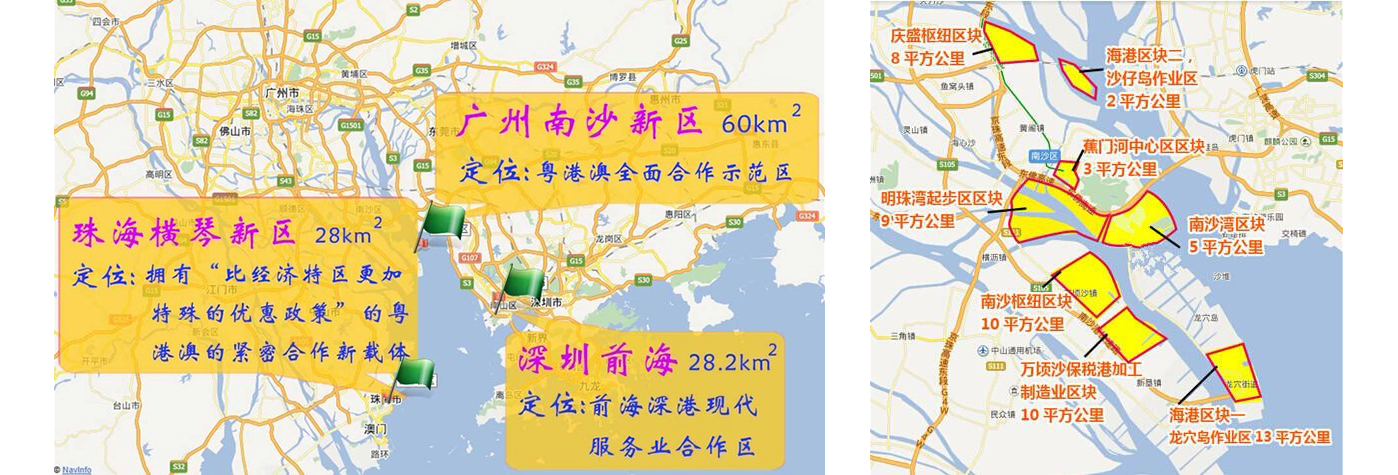Nansha Free Trade Zone
The State Council decided to establish the China (Guangdong) Pilot Free Trade Zone in December 2014. Guangdong FTZ covers an area of 116.2 square kilometers and integrates three existing bonded zones in four areas — Nansha New Area in Guangzhou (60 square kilometers), Qianhai and Shekou Subdistrict in Shenzhen (28.2 square kilometers) and Hengqin Subdistrict in Zhuhai (28 square kilometers).
The free trade zone is one of the most important move to promote economy by Chinese government. Its strength and significance are comparable to other two events --the establishment of Shenzhen Special Economic Zone in 1980s and the development of Pudong in 1990s. The core is to create a business environment in line with international practice,competitive for inward and foreign investment. At present, the four approved Free Trade Zone are as followed: China (Shanghai) Pilot Free Trade Zone, China (Guangdong) Pilot Free Trade Zone, China (Tianjin) Pilot Free Trade Zone, China (Fujian) Pilot Free Trade Zone.

Nansha area of Guangdong FTZ is divided into 7 functional zones: Port Cluster(15 square kilometers), Pearl Bay Start-up Cluster (9 square kilometers),Nansha Hub Cluster (10 square kilometers),Qingsheng Hub Cluster( 8 square kilometers), Nansha Bay Cluster (5 square kilometers),Jiaomen River Central Cluster (3 square kilometers),Wanqingsha Bonded Port Manufacturing Cluster (10 square kilometers).
Port Cluster, covering an area of 15 square kilometers(a quarter of total area) on Longxue Island and Shazai Island, is the largest one of these zones. This cluster is more mature in development, including Nansha Phase I, Nansha Phase II , Grain and Multi-purpose Terminal, Nansha RORO Automobile Terminal, Xiaohu Petrochemical Terminal, several shipbuilding industries, Nansha Phase III under construction and Nansha Phase IV in planning.
